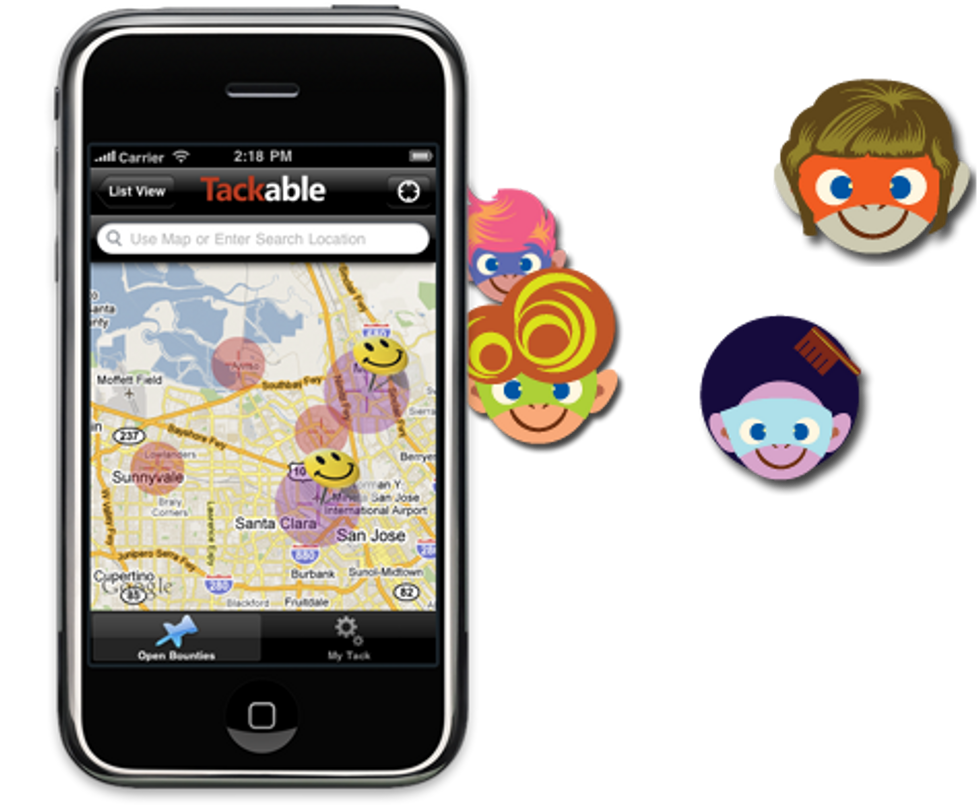Last Friday afternoon, a big, wind-driven fire broke out in the Mission, heavily damaging two houses. Like many of my neighbors, I walked over to watch the firefighters at work and snapped a few photos, which I later posted to Facebook.
There, a few people commented, but inevitably, those shots pretty much got lost in the stream. Just another little local story, partially told and easily forgotten -- one among many.
Well, Luke Stangel and his team of 10 would like to fix that. They are building a mobile photojournalism platform that may help photos like those of the fire find a more useful home -- as part of crowd-based news photo network in real time organized by geo-coded location.
The first iteration of their platform, which is called Tackable, has been around since last October in beta, including a live iPhone version for the Spartan Daily at San Jose State University, just down the road from Tackable's offices in the cavernous (and now largely empty) Mercury News building off of Highway 101 in San Jose.
The first fatal shooting ever to occur in the school's history happened earlier this spring, and students were posting photos and comments to Tackable almost immediately afterward, whereas the Mercury News was able to publish its story about the tragedy only the following morning.
"At this point the world of news is kinda still as it always was, notes Stangel. A "lone wolf" reporter has to hunt down the details best as (s)he can, from a few sources, and then broadcast the results to a passive audience that has no active role in the news-gathering process.
"But the crowd is figuring out that it's a lot more powerful than it thought it was," continues Stangel. " And although it isn't completely true yet that reporters aren't irrelevant, we are headed in that direction."
According to his vision, Tackable will provide journalists a channel to invite the crowd to participate in playing the news, thereby unlocking the potential in buzzwords like "citizen journalism" and "user-generated content" that have been bouncing around media circles for years without any credible results to date.
With Tackable, a reporter can issue an assignment, such as "There's a fire reported in the Mission. Send me photos asap." And then harvest the results and present what comes in for the community to see, which inevitably will set off continuing discussion and information-gathering throughout the news cycle around that particular event.
Stangel, now 28, left his lucrative marketing position at a startup making and selling portable karaoke machines for young girls when he was 20 and spent the next seven years as a reporter at the Palo Alto Daily News and Contra Costa Times. He now aspires to help mobilize the crowd to create "the first draft of the first draft" of the news, in the form of a new layer of photographs based on Google Maps.
"Our system is airtight as to location and time," he explains, referring to how Tackable pulls location and time-stamped data out of the user's phone. "We will be able to identify exactly where a photo was taken with 95 percent reliability." (There will be holes inside some buildings where a 3G signal, and therefore GPS data, cannot be accessed.)
He notes that the technology needed to make Tackable a success already exists in the form of camera-phones in everybody's pocket, and that by the end of this year, a projected 100 billion photos will have been posted to Facebook alone, not to mention, Twitpic, Instagram, Flickr and all the other sites and services popular with users.
The sheer volume of Tweets during mass gatherings like the protests in Tahir Square, reaching 10,000 Tweets per minute, many including photos, suggests that a virtual army of motivated citizen journalists is already hard at work documenting the major events of our time, and journalists simply need better tools to help tell these stories better.
Most of the Tackable team members have backgrounds in social gaming, including the developers of Diablo II and Rock Band, and Stangel imagines that their platform will be used for things like a "real-world scavenger hunt for news."
Tackable will retain a one-time right to publish user photos for free, while citizens who participate will accumulate rewards, much as in gaming, which they can convert into deals at nearby restaurants and shops, etc.
The startup has a relationship with the Media News Group, which owns the Mercury News and a couple dozen other newspapers, which means that when they launch a new version of their platform next month, it will instantly be available to hundreds of thousands of people in the Bay Area.
Stangel can't wait. "Now we will be able to say to people, 'get involved with the news.' The typical story will no longer have, say, three voices, but more like a hundred."
Longer term plans call for Tackable to move beyond photos to integrate text, video, and audio content into its platform, and the version they are preparing to release next month also contains local advertising units right next to the news articles as displayed on the map.





















